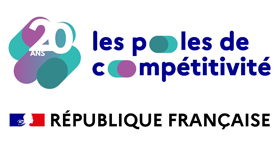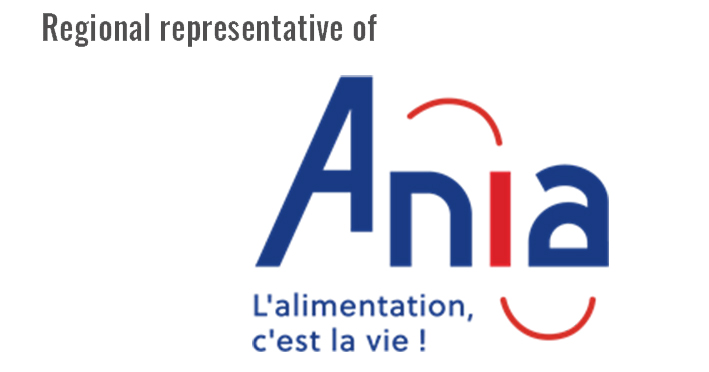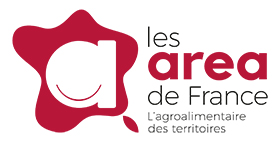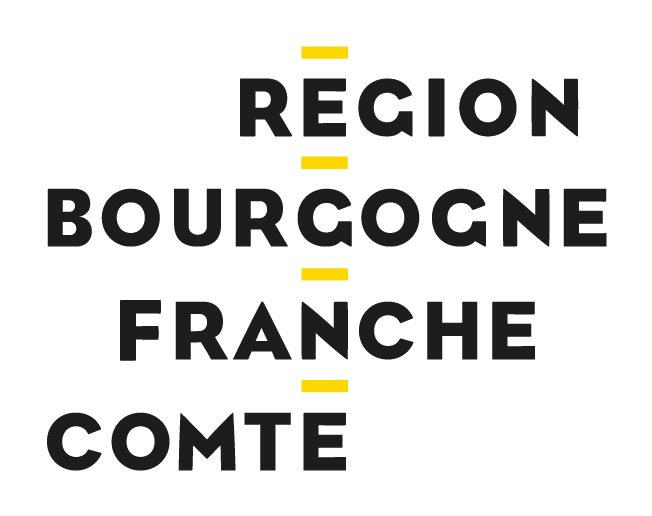18 October 2018 / The experts of the Vitagora ecosystem / Vitagora publication / Science and technologies
Flavescence dorée vine disease - testing with imaging and artificial intelligence
This article is also available in French:
 Flavescence dorée (from French "Flavescence" : yellowing and "dorée" : golden) is an incurable vine disease well-known to winemakers. Symptoms are similar to black-wood symptoms (Candidatus Phytoplasma solani). No measures have yet been developed to detect and distinguish between these diseases quickly and effectively. How does the DAMAV project address this issue to distinguish between these two diseases? How can Flavescence dorée be diagnosed?
Flavescence dorée (from French "Flavescence" : yellowing and "dorée" : golden) is an incurable vine disease well-known to winemakers. Symptoms are similar to black-wood symptoms (Candidatus Phytoplasma solani). No measures have yet been developed to detect and distinguish between these diseases quickly and effectively. How does the DAMAV project address this issue to distinguish between these two diseases? How can Flavescence dorée be diagnosed?
Why this should interest you
- Flavescence dorée is an incurable vine disease that is difficult to distinguish from black wood (Candidatus Phytoplasma solani).
- No system for early and rapidly distinction between Flavescence dorée and black wood has yet been established.
- Traditional detection of flavescence dorée takes place on foot amongst the vines, followed by biochemical testing to confirm diagnosis. It is a time-consuming, labour-intensive, and expensive process.
- Early detection of flavescence dorée allows containment cells to be established to protect the rest of the vineyard.
- Neural sensors and processors provide new possibilities for detailed analysis of colour, plant texture and spectrum.
Incurable and contagious, flavescence dorée is a major problem for vineyards. The guilty party is a small winged insect from the planthopper family that transmits the disease onto vine leaves. Once contaminated, the plant discolours, and weakens and inflorescences, the flowers, die. Despite being well-known to winemakers, the disease is difficult to diagnose because it is difficult to distinguish from black wood, another vine disease.
Traditionally, the first phase of diagnosis is walking amongst the vines to identify infected leaves. It is a time-consuming, costly, and labour-intensive process, particularly for large vineyards during the critical harvest period. Samples are then sent to a laboratory to confirm the presence of the disease. In some cases, suspected flavescence dorée, based on visually inspection, is then correctly diagnosed as black wood.
No system of automatic detection of flavescence dorée exists. What’s more, the scientific community agrees that no signs make it possible to quickly distinguish between flavescence dorée and black wood in the early stages. Frédéric Cointault and his team are working on the development of an aerial system for diagnosing vine disease as part of the DAMAV project.
A lecturer at AgroSup Dijon and researcher at the AgroEcology joint research unit, Frédéric Cointault provides us with his expertise about aerial diagnostic techniques for flavescence dorée using drones, imaging and artificial intelligence.

Frédéric Cointault
Image processing for vine disease diagnosis
Having studied physical measurements and electronic and image processing, Frédéric Cointault directed his attention to imaging for his masters, then wrote a thesis on the optimisation of fertilizer application using imaging. After his thesis, Frédéric became a lecturer at AgroSup Dijon in 2002. He is also the scientific head of the DAMAV project. The project’s objective is to develop an automated detection solution for vine diseases using micro-air vehicles, otherwise known as microdrones.
AgroEcology joint research unit
Frédéric is part of the AgroEcology joint research unit and more specifically of the GEAPSI centre (genetic and environmental determinism of plant adaptation to innovative cultivation systems). His objective is to understand how legumes and weeds in agrosystems adapt to environmental constraints. Research is conducted into the physiological genetic mechanisms that contribute to the capacity of these plants to adapt to agroecosystems. He is responsible for the AIP team (acquisition and processing of images for phenotyping).
A crossroads of technologies
Imaging for observation
The aim of the DAMAV project is to analyse the electromagnetic spectrum between 400 and 1,100nm from ultraviolet to infrared. "In this range, we determine wavelengths that allow us to distinguish between a healthy leaf and an infected leaf. Four of these wavelengths were selected after statistical analysis and we are designing a four-camera sensor where we will position four filters corresponding to the four wavelengths," says Frédéric.
Image analysis for detection
Visible symptoms do not appear on the leaf until the disease is advanced. Early detection depends on what cannot be seen, "...that is, internal leaf disturbance," he explains. The colour of the leaf only changes when the internal structure and texture are altered. "Spectral information collected by cameras provides data about leaf colour, texture and spectrum. When this information is combined with actual diagnosis of leaf health, each pixel of an image can be identified to distinguish between sick and healthy areas on the leaf.”
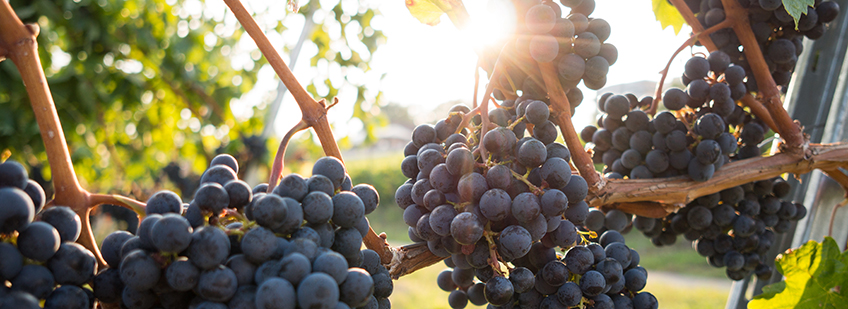
Artificial intelligence for learning
When this analysis has been carried out on a large number of images, data is sent to a neuronal processor. This is where Yumain (the former Global Sensing Technologies), one of the partners of the DAMAV project, comes in. “We show a triptych of spectrum, colour and texture to an artificial intelligence (AI) processor and tell it whether it is a symptom of the disease or not. AI processes the information and learns to determine the nature of each pixel in an image. It will then be able to retrieve information from its database when presented with a new image associated with flavescence dorée and provide a diagnosis," Frédéric explains. "We are currently building the database. The goal is to link information obtained by imaging with the information obtained in the field and in the laboratory."
Changes in the environment: an added challenge
Several parameters make this process more complicated than it seems. "Imaging analysis results depend on grape variety, weather conditions, climate, location and region. This solution must therefore be adapted and customised to all conditions and to each vineyard to be able to provide accurate diagnosis.
A project reaching its operational launch
“By the end of 2018, the sensor will have passed two test campaigns. Images are currently taken at human height to work on the concept, but drone images with this first sensor will soon be available for analysis. The drone will be operational in September and make several flights. The next step is to conduct as many screening campaigns as possible to improve the system, retrieve a large number of images and analyse them as much as possible," concludes Frédéric.
Keywords
Farming, vine, disease, screening, flavescence dorée, drone, sensor, imaging, artificial intelligence
|
Go further...For more information about Frédéric Cointault’s research or to contact the research team, contact Elodie Da Silva: elodie.dasilva@vitagora.com
A food engineer from the French city of Toulouse, Elodie leads the "Innovation & Ecosystem" team of Vitagora in providing support for agrifood business innovation goals, with enthusiasm, professionalism and confidentiality. |
Further reading
- Hania AL SADDIK, Anthony LAYBROS, Bastien BILLIOT and Frederic COINTAULT, “Using Image Texture and Spectral Reflectance Analysis to Detect Yellowness and Esca in Grapevines at leaf-level”, Remote Sensing, 10(4), 2018.
- Hania AL SADDIK, Anthony LAYBROS, Jean-Clause SIMON, Frederic COINTAULT, “Protocol for the definition of a Multi-Spectral sensor for specific foliar disease detection: case of Flavescence Dorée”, Methods in Molecular Biology, Phytoplasma: Methods and Protocols 2018, Springer.
- Hania AL SADDIK, Simeng HAN, Jean-Claude SIMON, Frederic COINTAULT, Solution de détection des maladies de la vigne par imagerie de drone, Revue des Œnologues et des technique vitivinicoles et oenologiques, 44(162), 2017.




 Home
Home



